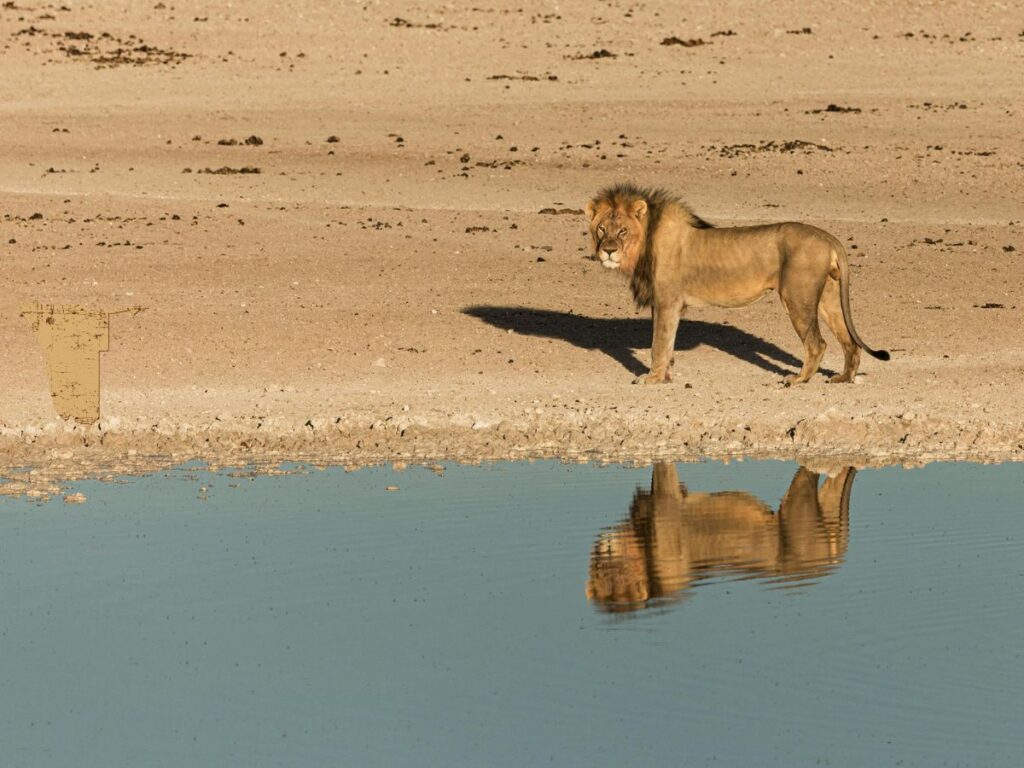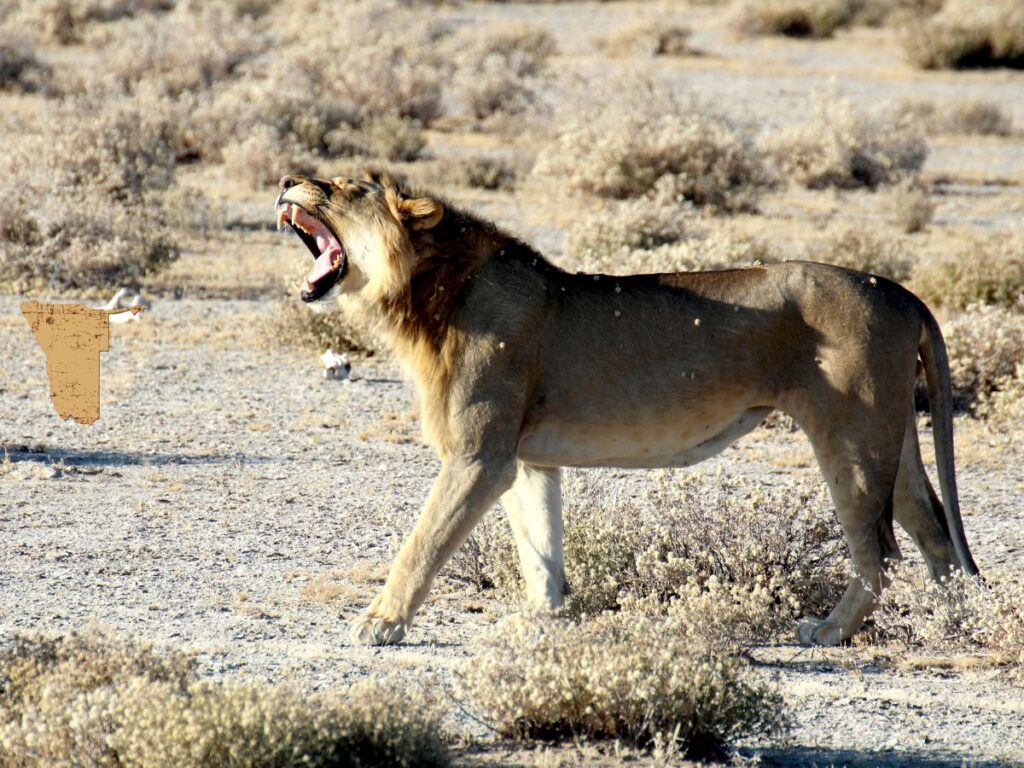In the remote, arid landscapes of Namibia, one of Africa’s most extraordinary wildlife experiences awaits: tracking the elusive desert-adapted lions. These magnificent creatures have evolved to survive in one of the planet’s most challenging environments, making them a rare sight and a testament to nature’s resilience.
The Unique Desert Lions of Namibia
Unlike their savanna counterparts, Namibia’s desert lions have adapted to thrive in the harsh conditions of the Namib Desert. These adaptations include:
- Ability to go for longer periods without water
- Larger home ranges spanning hundreds of square kilometers
- Specialized hunting techniques focused on desert-dwelling prey
- Physically leaner bodies built for covering vast distances
With fewer than 150 individuals remaining in the wild, these cats represent one of Africa’s most threatened lion populations. Their conservation story is as compelling as the experience of tracking them.
The Tracking Experience
Tracking desert lions is not your typical safari activity. It requires patience, dedication, and the guidance of experienced conservationists. The experience typically unfolds as follows:
- Pre-dawn departure from base camps in specialized 4×4 vehicles
- Tracking using radio telemetry for collared lions or following fresh tracks
- Hours of patient searching across vast desert landscapes
- When lions are located, observing from a respectful distance
- Learning about conservation efforts directly from researchers
The Kunene region in northwest Namibia offers the primary habitat for these rare predators. Here, the stark beauty of rocky outcrops, dry riverbeds, and golden dunes creates a dramatic backdrop for an unforgettable wildlife encounter.
Conservation Challenges and Efforts
The Desert Lion Conservation project, founded by the late Dr. Philip Stander, has been instrumental in studying and protecting these animals. The project faces numerous challenges:
- Human-wildlife conflict with local communities and farmers
- Limited genetic diversity in the small population
- Climate change intensifying desert conditions
- Maintaining safe corridors for lion movement
Tourism plays a vital role in conservation efforts. When travelers participate in ethical lion tracking experiences, they directly contribute to research funding and create economic incentives for local communities to protect lions.
Planning Your Desert Lion Experience
For those seeking this rare wildlife adventure, careful planning is essential:
- Best time to visit: The cooler dry season (May to October) offers better tracking conditions
- Duration: Allow at least 3-4 days dedicated to lion tracking
- Guides: Book with operators who work directly with conservation organizations
- Expectations: Understand that sightings are not guaranteed
- Preparation: Pack appropriate gear for extreme temperature fluctuations
Several specialized tour operators offer desert lion experiences, often combining tracking with visits to other attractions like Etosha National Park or the iconic Skeleton Coast.
The Ethical Dimension
Responsible tourism is paramount when tracking such sensitive species. Ethical operators follow strict guidelines:
- Limited vehicle numbers and distance restrictions
- No off-road driving in sensitive areas
- No tracking of females with young cubs
- Educational components emphasizing conservation
- Direct financial contributions to research and community development
By choosing operators with strong conservation credentials, visitors ensure their experience contributes positively to the future of these remarkable animals.
A Transformative Experience
Those fortunate enough to witness desert lions in their natural habitat often describe it as a life-changing experience. Beyond the thrill of the sighting itself, tracking these rare predators provides profound insights into nature’s adaptability and resilience.
As dawn breaks over the Namib Desert and the golden light illuminates a pride of desert lions resting under an acacia tree, one can’t help but feel privileged to witness one of Africa’s most extraordinary natural adaptations. For wildlife enthusiasts seeking experiences beyond the ordinary, tracking desert lions in Namibia represents the ultimate combination of adventure, conservation, and natural wonder.

1. Hoanib Skeleton Coast Camp
- Why Stay Here?
- Luxury camp co-managed with local communities, offering exclusive lion-tracking expeditions with researchers like Dr. Philip Stander 12.
- Located in the Hoanib River Valley, a hotspot for desert lions and elephants.
- Full-day excursions to the Skeleton Coast included for stays of 3+ nights 14.
- Price: USD 1,500–USD 2,500 per person per night (all-inclusive).
2. Shipwreck Lodge
- Why Stay Here?
- Unique shipwreck-inspired design in the Skeleton Coast National Park.
- Expert guides track lions hunting seals along the coast 12.
- Combines luxury with rugged adventure (quad biking, dune drives) 14.
- Price: USD 2,000–USD 3,000 per person per night (includes activities).
3. Serra Cafema (Wilderness Safaris)
- Why Stay Here?
- One of Namibia’s most remote lodges, set on the Kunene River.
- Lions occasionally roam near the riverbanks; Himba-guided walks add cultural depth 14.
- Price: USD 1,800–USD 2,500 per person per night (all-inclusive).
4. Desert Rhino Camp (Save the Rhino Trust)
- Why Stay Here?
- Budget-friendly option partnering with the Desert Lion Conservation Project 12.
- Tracks lions and rhinos in the Palmwag Concession, known for rare sightings.
- Price: USD 800–USD 1,200 per person per night (all-inclusive).
5. Damaraland Camp (Wilderness Safaris)
- Why Stay Here?
- Community-run camp in the Huab River Valley, praised for eco-tourism and lion conservation 14.
- Tracks desert-adapted lions, elephants, and black rhino.
- Price: USD 900–USD 1,500 per person per night (all-inclusive).
Key Considerations for Desert Lion Tracking
- Best Time to Go: May–October (dry season) when lions congregate near waterholes 12.
- Safety: Always follow armed guides—lions here are wild and unpredictable 9.
- Conservation Impact: Many lodges fund anti-poaching and community programs 1214.
For luxury and research-backed experiences, Hoanib Skeleton Coast Camp and Shipwreck Lodge are top choices. For budget-conscious travelers, Desert Rhino Camp offers excellent value.

